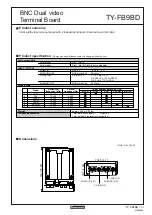
12
V
e
rsio
n 2,
06
.0
8.
201
0 / M
o
d
u
leV
e
rs
io
n 1.
0
Introduction
Gigaset N870 IP PRO / LUG IE-UK_IM en / A31008-XXXXX-XXXX-X-XX / intro.fm / 8/24/18
To keep the synchronisation hierarchy flexible (e.g. when the requirement is to optimise synchronisa-
tion paths after installation, or to use redundant synchronisation paths), planning short distances for
only one synchronisation path is not recommended. The recommendation from actual applications
is the pragmatic solution of planning distances such that DECT synchronisation is possible between
most neighbouring base stations. This is of course also dependent on the ambient conditions.
Thick concrete ceilings or walls would not permit direct DECT synchronisation for example.
Necessary overlapping for LAN synchronisation
When the connection quality is not high enough in certain areas, base stations can also be
synchronised over LAN. Between base stations synchronised over cable, the distances can be
greater and the overlapping zones smaller. However, it is not possible either between these base
stations to increase the distance to a minimum handover overlap. So that no signal overlaps
of two base stations occur on the handsets, base stations must always detect the channels
that neighbouring base stations are assigned in the process of dynamic channel assignment.
More information on LAN synchronisation is in operating instructions “Gigaset N870 IP Multicell
System – Installation, Configuration and Operation”
Short distance, high overlap
Synchronisation overlap along
the synchronisation path
Long distance, little overlap
Handover overlapping without
direct synchronisation path
Maximum distance for stable,
good signal reception on the handsets
Maximum distance to detect overlaps













































